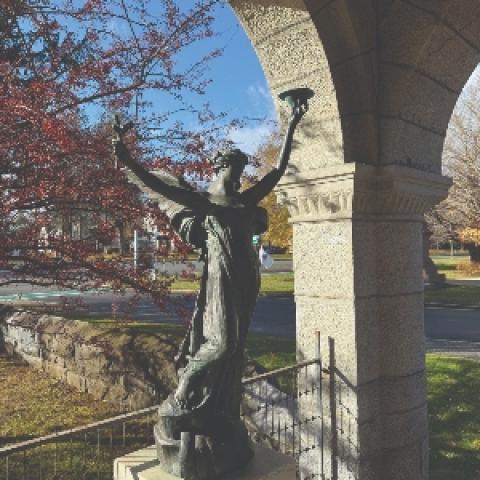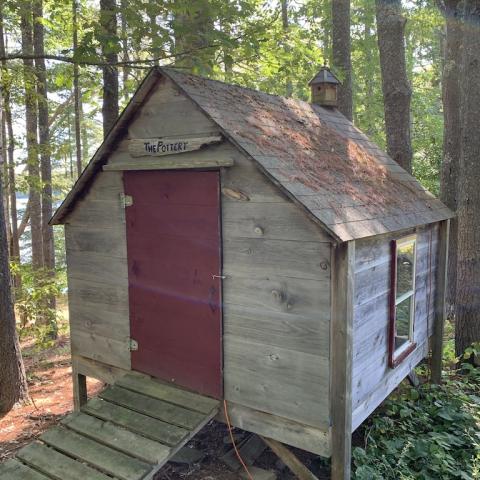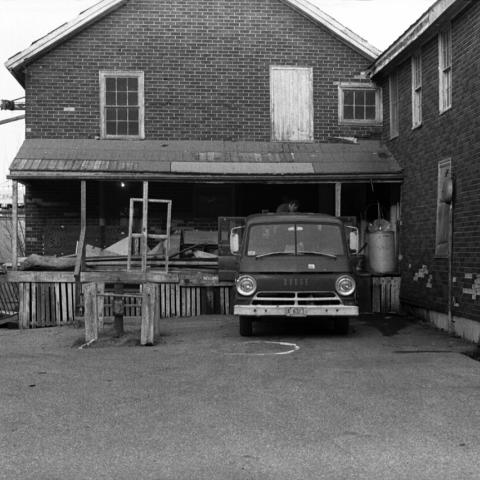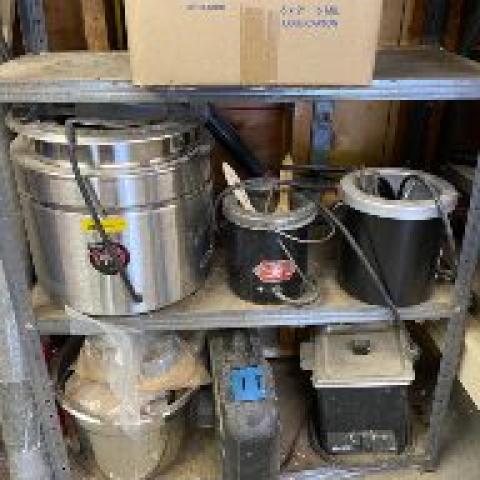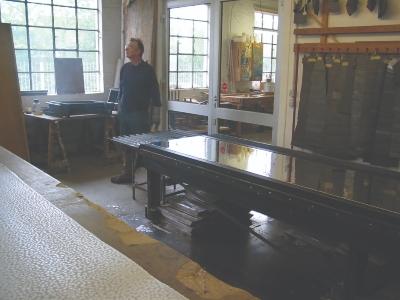
Made right here
The organist of my home church was a harpsichord maker, and visiting his workshop was my first exposure to building musical instruments. I guess I was something like ten or eleven years old so my impressions may not have been very sophisticated, but as I think back over more than fifty-five years in the business, I must have been impressed. I started taking organ lessons when I was twelve, and sometime soon after that a mentor took me to an open house at the original workshop of the Noack Organ Company in Andover, Massachusetts. There I got an early eyeful of what goes into the instrument I was learning to love.
Since that first encounter with the art of organ building, I have been privileged to visit many organ builders—from large and impressive operations like Casavant Frères and Schantz to tiny one-person shops. There are elements common in the smallest and largest shops. For example, every organbuilder has a table saw. I like to say that organbuilding can be described as the art of knowing where to put the holes, which means each workshop has a drill press and an impressive collection of drill bits. There are thousands of drill bits in my workshop, ranging in size from a few thousandths of an inch or tenths of a millimeter to three-inch behemoths for drilling large holes in rackboards. You have to hang on tight when one of those bad boys is turning in the wood.
Every shop has a setup for cutting and punching leather. I use the plastic cutting boards you buy in fabric stores for cutting long strips of leather and a rotary knife like a pizza cutter, and I have a heavy end-grain block capped with half-inch-thick PVC for punching the thousands of leather circles and buttons needed for the leathering of pneumatic actions and valves.
Over my half-century experience with organ shops, there have been countless innovations in the world of tools. When I was an apprentice working with John Leek in Oberlin, Ohio, we turned all our screws by hand. Dismantling a large electro-pneumatic-action organ for releathering was like a triathlon, working over your head with a screwdriver turning thousands of screws to release bottomboards, pouchboards, stop action machines, and windlines. We had forearms like Popeye. Later we had the first electric screwdrivers, which were simply drill motors that had to be plugged in. At first, they were too powerful for driving screws into the soft wood of organ windchests, but soon adjustable clutches were introduced allowing you to set the torque of the machine to avoid stripping the threads of too many screws. Still, these had power cords that were a nuisance to keep away from the pipes of the windchest below where you were working. It was always a Mixture.
When cordless drills and screw guns were introduced, the battery life was not great. You would need to have three or four batteries dedicated to each tool if you wanted to run it for a few hours, changing and charging the batteries as you went. Today there is a wide range of powerful twenty-volt tools available with remarkable battery life and torque enough to sprain your wrist. I have switched my entire assortment of professional and home maintenance tools to the 20V DeWalt system, including chainsaws and weed whackers, delighting that I no longer need to keep gasoline around the house. I can run that weed whacker for an hour on a single charge, long enough to get around our large rural lawn. And the screw guns just keep going and going.
Was it twenty years ago when Computerized Numerical Control (CNC) machines were becoming popular? These technological marvels can be programmed to quickly produce complicated woodworking projects. One of the first uses of CNC machines in organ shops was the drilling of windchest tables that have rows of different sized holes for each stop. A drawing is fed into the computer, and the machine selects the bits and drills away. I remember standing at the drill press, drilling the holes in rackboards, toeboards, and sliders for a new organ, changing the bits by hand for each different hole size. A long row of boards stood against the wall nearby, and I drilled the 7⁄16-inch holes in all of them, then would change the bit to half-inch and start again. (I followed the rule of drilling the smallest holes first, knowing that if I made a mistake and drilled a hole or two too many with one bit, it would be easier to correct than if I had started with the big holes.)
When I first saw CNC machines in operation, it seemed that you would need a group of NASA scientists to operate one. Today, knowing some of the very small shops that had adopted them, it is apparent that pretty much anyone can learn to run one. CNC machines crank out windlines, action parts, reed blocks, pipe shades, and pretty much any part of an organ made of wood. CNC machines are also used for making things from metal, mass producing hundreds of identical parts or producing single complex fittings.
Making metal organ pipes is one of the magical parts of our trade. To do that, especially to make alloys and cast sheets of molten metal, a shop needs an expensive, complex setup that requires a lot of space, so most organbuilders buy pipes made to their specifications by specialized pipe-making firms. Still, several shops have all this equipment, and it is a thrilling process to witness. Metal ingots are melted in a cauldron over high heat, with the different metals, usually tin and lead, weighed carefully as the alloy is specified by the tonal director. The cauldron is mounted near the end of a long narrow table, typically with a stone surface, and the table is fitted with a sled. The metal is ladled into the sled, and two workers push the sled steadily down the length of a table, leaving a thin sheet of the molten brew on the stone. Stare at the gleaming surface for a few seconds, and watch it glaze over as the liquid turns to solid.
Casting metal for organ pipes is a process that has been in use as long as we have had organ pipes. The Benedictine monk, François-Lamathe Dom Bédos de Celles (1709–1779) included beautiful engravings of this process in his seminal book, L’art du facteur d’orgues (The Art of the Organ-Builder), published between 1766 and 1778. When the metal has set and cooled, the sheets are rolled up. They are then either planed by hand or on a huge drum to the specified thickness. Some pipe makers hammer the metal before forming the pipes, duplicating an ancient process that compresses and strengthens the metal. Then they cut the metal to create the different parts of an organ pipe, rectangles for the resonators, pie-shaped for the tapered feet, and circles for the languids. They are formed into cylinders and cones and soldered together to form the pipes. Every organist should find a chance to witness this incredible process.
Potter at work
Harry Holl’s Scargo Pottery in Dennis, Massachusetts, was a common summer evening family outing when I was a kid. We all loved the woodsy setting with a row of potter’s wheels under a corrugated fiberglass roof where we would stand watching Harry and his colleagues, many of whom were apprentices, create beautiful dinnerware, mugs, vases, and bowls. Like the mysteries of casting organ metal, it is a bit of magic to watch an artist place a blob of clay on a wheel and poke and prod it into a vessel. Watching a blob become a bowl is like watching a flower open. The craft is exacting when making a set of plates or bowls. Each is a hand-made individual, but they will stack better in your kitchen if they are pretty much the same size, so the potter uses a caliper to measure the height and diameter of each piece to form a set.
When Wendy and I moved into our house in Newcastle, Maine, in the winter of 2001, my parents gave us a set of eight large dinner plates made by Harry Holl with deep blue glaze in a rippling pattern, which we still use frequently. There is a large table lamp on my desk, and the house is scattered with the lovely artworks from Scargo Pottery that we eat and drink from each day.
Harry worked mostly with ceramic clay that emerged white from the kiln. There is a particular beach near Scargo Pottery with distinctive black sand that Harry liked to blend with his clay, giving his pieces a speckled effect that shows through the glaze. His sense of shapes and his love of his material made him a great artist. His daughters Kim and Tina run Scargo Pottery now, long after their father’s death.
Those summer outings typically had a pleasant coda, as we would pass an ice cream shop called Sea Breezes on the way home. Getting into the car at Scargo Pottery, we would pipe up a sing-song chorus, asking if “Sea Breezes are blowing.” My father was a sucker for ice cream, so it was always a safe bet.
Will it float?
Around us in Maine there are several boat yards that build custom wooden boats. Like any artisan’s shop, they are a delight to visit, and as a life-long organbuilder to whom straight and square are virtues, the absence of straight lines in the hull of a wooden boat is mind-boggling. The hull is nothing but voluptuous curves in every direction, from front to back (forward to aft), top to bottom (rail to keel), and side to side (beam to beam). Boat builders place huge planks into steam-filled vessels to soften them and carry them to the side of the boat where they are fastened to the ribs with huge bronze screws (which don’t corrode in salt water) or wooden pegs. When I worked with John Leek, we used the same steaming process to make the bentsides of harpsichords.
When a hull is complete and decks and interior are fitted out, the boat is launched, a test that no organbuilder ever has to face. I marvel that the never-before-immersed vessel floats flat and level. I guess it is comparable to the marvelous moment when you turn the wind on in an organ for the first time. Both the boat and the organ come to life at their first moments of usefulness.
Back to its maker
In the spring of 2013, Wendy and I set sail in Kingfisher from Marshall Marine in Padanaram, Massachusetts. She is a Marshall 22, built there in Padanaram in 1999. We had purchased her the preceding fall and spent the winter imagining and planning our maiden voyage to bring her to her new home in Newcastle, Maine. Our son Andy then lived in nearby New Bedford, Massachusetts (home of the largest fishing fleet in the United States). We left one of our cars in Newcastle, and Andy dropped us off at the boatyard and took care of the other car while we were at sea.
Our trip took six days and five nights and covered more than 250 miles. We had mapped out the route and reserved dock space or moorings in different marinas for each night. We ate dinner onboard most evenings and reveled in showers at the marinas. It was one of the great adventures we have shared as a couple. A friend raced out in her motorboat to snap a photo of us entering the Damariscotta River. Stepping onto our dock and walking up the back lawn seemed like a miracle. Sleeping on solid ground for the first time in six days, I rolled out of bed onto the floor.
Each summer since, we have set aside weeks for “cruising,” when we provision the boat for days and nights on the water and explore the infinity of the famous rocky coast of Maine. We have anchored in picturesque harbors and on remote islands. After the huge learning curve of handling the boat on the first trip, we have mastered Kingfisher, learning when we can push her, when we should reef the sail against heavy wind, and just how high can we “point” against the wind to round that reef without tacking. We have several friends in the area who have waterfront houses, and one of our favorite outings has been to sail to them for rollicking dinners and slumber parties. And one of the great things about a boat is that you can go places otherwise unreachable.
Last summer, nudged by the pandemic, we left Greenwich Village, moved into our new home in Stockbridge, Massachusetts, and quickly made a gaggle of new friends. Tanglewood, the summer home of the Boston Symphony Orchestra, fifteen minutes from home, would be less of a summertime conflict if they only held concerts when it was not good sailing weather in Maine.
When our local boatyard hauled Kingfisher out of the water last fall, I asked them to touch up the varnish on the brightwork, the teak pieces that trim the fiberglass hull whose finish is ravaged by constant sunlight and salt. He touched it up, all right, and sent me a bill that recalled the saying, “She looks like a million bucks.” It was a surprise, but we took it as a hint. What better time to offer her for sale than when she looks like a million bucks?
Two weeks ago, Kingfisher went by truck back to Padanaram, and last week I stopped by Marshall Marine to deliver the sail that had been at a sail maker for winter cleaning and repair. Geoff Marshall, who runs a workshop with seven people building those lovely boats, is also the broker from whom we bought her, and he walked me through the different buildings, talking about the various boats in different stages of completion. Here is one that is just getting started, and here is another that is due to launch in a few weeks. The new owner is just as eager to see her in the water before Memorial Day as the organist is to play the new organ on Easter Sunday.
When I watched Kingfisher drive up the hill away from Round Pond, Maine, on the back of the truck, I felt as though a piece of me was dying. How we have loved the time onboard with family and friends, and with Farley the Goldendoodle curled up on the deck. There is nothing like the taste of the first sip of coffee in the morning or of a gin and tonic after a long day of sailing, and there is nothing like the thrill of bending the wind to get you to a party.
Frequent readers will remember that I have written many times about the common philosophies of sailboats and pipe organs, that both are human attempts to control the wind. Kingfisher is leaving our family, but I will always have a little salt water in my blood. You haven’t heard the last of it.

